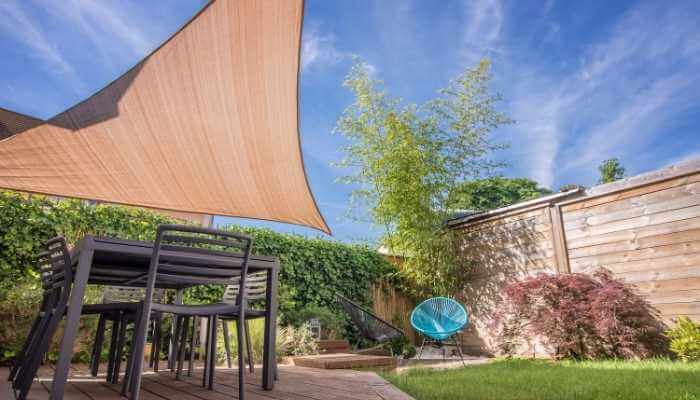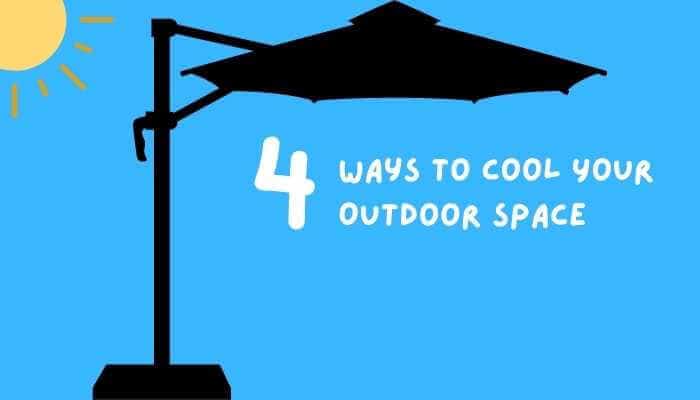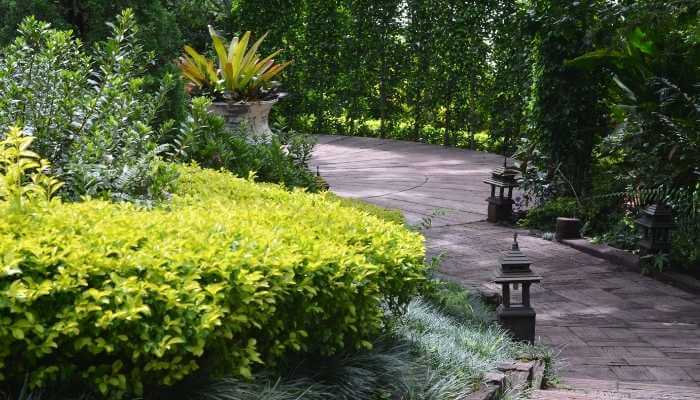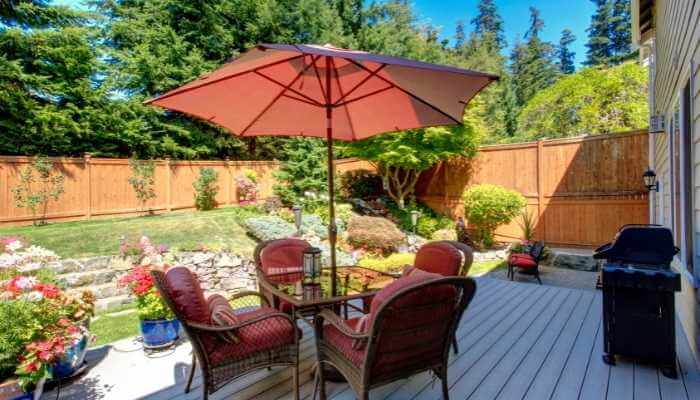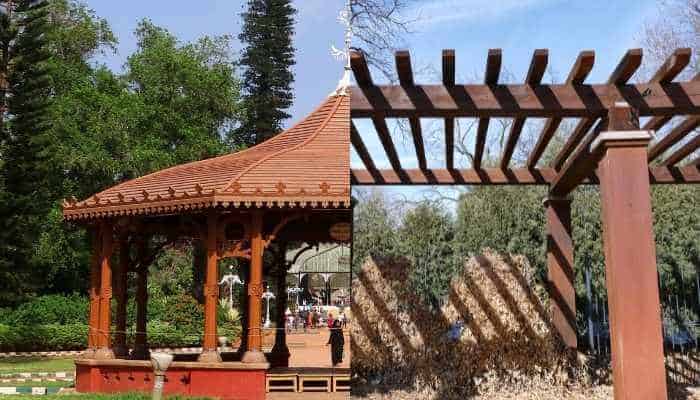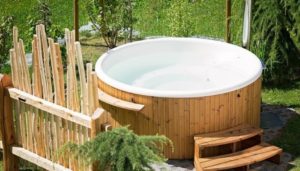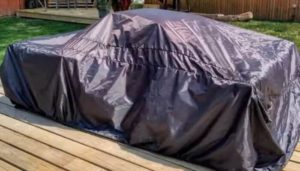It’s pretty obvious that shade sails can provide much-needed shade for your outdoor living spaces during the heat of the day. They become very useful during the summer months. But they’re also much more dynamic than other methods of providing shade.
Shade Sails are a good choice for keeping your outdoor living space cool. They cover large areas, they’re sturdy and easy to install. Also, most manufacturers use environmentally sound materials. They come in many colors and sizes, so can fit most aesthetics.
There are several benefits to installing shade sails on your property, but keep in mind the price and limitations. Let me explain.
Shade Sails Cover Large Areas
High-quality shade sails can block out 99% of harmful UV rays from the sun. They usually come with a 10-year warranty against solar degradation. But the construction usually lasts 5–8 years. You can get these things in triangles and in rectangles. There has to be at least a 15° slope to encourage water runoff.
These things can cover large areas and small–depending on the size you’re willing to buy and install. I’ve seen some people install them on walls and poles around their swimming pool to keep a good portion of the water cooler. Also, if you’re like me and you burn easily, having a shade sail over part of the pool is a welcome thing.
Other types of cover can’t help with pools. They have to be attached to permanent structures or can be placed on a pole and have to be erected with that pole as the central support. You can attach sails to structure walls or just to well-installed and sturdy columns or poles all around the pool you’re trying to shade.
Shade Sails Are Sturdy in Windy Conditions
Even the sturdiest umbrella will struggle with windy conditions. The normal method for dealing with storms is to take down an umbrella and put it away. For awnings, you either hope for the best or retract it if it’s retractable. Shade Sails that are made of good quality materials can handle high winds. This is because most of them are actually porous.
For those that are waterproof, if you install them correctly and choose high-quality material, they should still be able to withstand high winds. You can get them custom installed for areas of high winds (such as here on the East Coast of the United States) and the tension needs to be strong enough.
They can take a lot of pressure and weight, but obviously, if you are about to experience hurricane-force winds or heavy snow, it might be best to take them down.
Shade Sails Are Easy to Install
It helps that you can install shade sails with relative ease compared to more permanent structures. You can use them right alongside more permanent structures as well. I’ve seen them used with pergolas and also used outside of rectangular gazebos. Extending from a house to another structure outside is also a common theme.
Shade sails should last well wherever they’re placed. Make sure your connections are tight and your poles or connected structures (walls of a building or roof rings) are sturdy. You can also adjust and move sails as needed, unlike more permanent structures like awnings.
What is odd for me is the cost of professional installation. It can run in the thousands. Once I researched it, I understood these installs are often custom things. The installers will make custom columns specifically for the space. The shade sails at set at the perfect angles by professional contractors. There is usually a guarantee involved as well.
There Are Often Environmental Benefits to Using Shade Sails
The material used to make the most shade sails comes from recyclable materials. We can use it over air conditioning units and over windows. Shade sails provide enough protection from solar energy that the temperature can be at least 10° lower than outside of it. It can increase the efficiency of your air conditioning by 10%–15%.
They also provide plenty of airflow, because they shade, they don’t enclose.
What Are the Shortcomings of Shade Sails?
By using shade sails, you get what you pay for. That goes for the product itself as well as the installation. The materials should remain taut and sturdy for years, but if you don’t install poles or hooks correctly, the sail can get damaged. If you get a substandard sail, the material can stretch or the sail can sag.
Worse than this, if you aren’t paying attention to the materials used to manufacture your shade sail, you might end up with one that is flammable. At the very least, look for one that is flame-retardant. Don’t compromise when safety is important. Double-check your materials and also just keep your fires and heat away from your shade sails.
Why Are Shade Sails So Expensive?
Cost depends on how much you want to spend and whether you can properly install these things yourself. You can purchase shade sails for very cheap, but you get what you pay for with these materials.
And the better sails are going to be heavy-duty and cost at least $300 for smaller versions and make their way up from there. For instance, 30ft (approximately 9 meters) square heavy-duty shade sails can run around $1700.
This is at least a 2-person installation, even if you DIY. You can get things handled cheaper, sure. If you don’t mind replacing your shade sails more often because they aren’t as heavy-duty and you install them yourself, the price lowers. Big box stores carry less expensive versions and you can learn to install them from many sources.
To get the product along with professional installation designs specific to your space, mounting rigs, and cemented poles, be prepared to spend $5000–$10,000. And that also depends on the size and number of shade sails needed for the design. Professional installation always comes with a price. But the professionals usually guarantee their work and the product quality.
In Conclusion
Shade Sails can be an affordable way to cool off your outdoor living space. Or you can get a professional installation for a bit more money. You just need to be sure you choose the correct fabric and install the shade sails correctly to get the most out of them. If you can’t guarantee this or you would prefer a more permanent solution to keeping your patio cool, then don’t stop here. Perhaps you should look into alternative ways to keep cool over the summer by reading my article on other ways to keep you cool.
